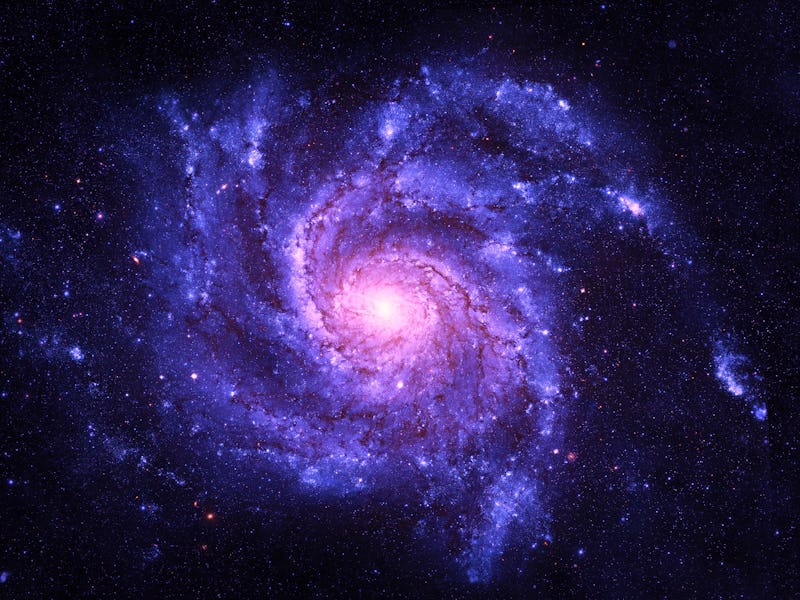Astronomers spot a galaxy “supercluster” almost as old as the Big Bang
It’s gigantic and over twelve billion light years away.

A newly discovered supercluster of galaxies is so distant that astronomers say its light has been traveling for over 12 billion years to reach telescopes on Earth. But this cluster, named SPT2349 ?56 is gigantic and so old that it is actually classified as a proto-cluster of galaxies, meaning it might be one of the earliest large clusters of galaxies in our universe. It is also one of the most actively star-forming proto-clusters known.
Supercluster SPT2349 ?56 was discovered in the submillimeter band by the South Pole Telescope. Astronomer Matthew Ashby from the Harvard Smithsonian Center for Astrophysics (CfA) was one of the team members who conducted follow-up observations with the Gemini Observatory, the Hubble Space Telescope, and the Spitzer Space Telescope in order to conduct deep observations at optical and infrared wavelengths.
SPT2349 ?56 hosts hundreds of galaxies, including over thirty submillimeter-bright galaxies and dozens of other luminous and/or spectroscopically confirmed star-forming galaxies. Even though this is a cluster of galaxies from the early Universe, galaxy mergers and active star formation is taking place at an incredible rate, producing over ten thousand stars per year. The astronomers said one of its brightest sources appears to be the merger of over twenty galaxies.
One of the goals of the observations was to try to obtain the stellar mass of the system; however, the team was unsuccessful. They said not knowing the stellar mass of the system made it impossible, for example, to know whether the huge burst of stars they observed was the result of an extraordinary efficiency or simply arose because the system was so extremely large.
A typical supercluster contains all the galaxy groups and galaxy clusters that seem to be associated with one another through mutual gravitational attraction and contains about a quadrillion solar masses. Astronomers have estimated that there are 130 superclusters located within 1.3 billion light-years of the Milky Way. Another supercluster from the early Universe that was detected by the South Pole Telescope in 2010, weighs in at around 800 trillion Suns and holds hundreds of galaxies.
The astronomers found that the star formation rate in this primordial cluster compares similarly to the star formation rate measured in nearby, regular galaxies, and so they conclude that the star formation processes at work in this early Universe are similar to those that came later, in the local universe. They found that this cluster does, however, show a deficit of molecular gas, suggesting that the activity is nearing the end of this tumultuous phase as the raw material for stars is being dissipated.
The astronomers said they predict that the core galaxies of this supercluster will quickly merge into one of the brightest galaxy clusters and that their observations provide a direct view of the early formation mechanisms of this class of object.
A false-color image of the far-infrared emission from a massive protocluster of galaxies (in the circle) dating from the epoch about 1.4 billion years after the big bang. Astronomers have completed deep optical and infrared observations of the complex and concluded that the star formation processes at work, although exceptionally active, generally seem to follow the same processes seen in our galaxy.
This article was originally published on Universe Today by Nancy Atkinson. Read the original article here.
This article was originally published on